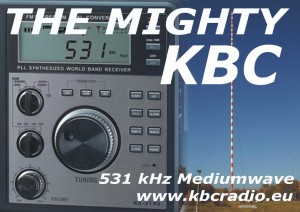Due to co-channel interference on 11750khz we will change frequency for this Sunday. The new frequency is 11835khz. Your comments and reports about this new frequency are important. So tune in this Sunday and let us know.
June 2nd – 1300 to 1400UTC
June 9th – 1300 to 1400UTC
June 16th – 1300 to 1400UTC
June 23rd – 1300 to 1400UTC
June 30th – 1300 to 1400UTC
July 7th – 1300 to 1400UTC
Frequency: 11835khz (25 meter band)
Target Area: East and Southeast Asia
Power: 125kw
Category Archives: Schedules and Frequencies
WRTH 2013 Summer (A) season available for download
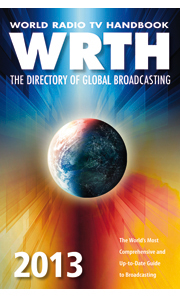 I just received the following message from Sean Gilbert with WRTH:
I just received the following message from Sean Gilbert with WRTH:
The WRTH editorial team are pleased to announce that the Summer (A) Season broadcast schedules file is now available to download for free from http://www.wrth.com/ just follow the link on the front page (updates).
Included in this file are: Broadcast schedules for international and clandestine/target broadcasters, international broadcasts in DRM, International frequency listing, and selected language broadcasts. Also included is a decode table for site and target area codes.
The 80 page file is just over 2MB in size and in PDF format (with bookmarks to assist in navigating between sections) and unique section page numbering to assist with printing. You will need the free Adobe Acrobat reader in order to open this file. The Acrobat Reader can be downloaded from http://www.adobe.com/
We hope you find this file a useful accompaniment to the printed WRTH.
May and June test transmissions from PCJ Radio International
 From May 19th until June 9th, 2013, PCJ Radio International will be conducting a number test transmissions from Trincomalee, Sri Lanka. Here are the details:
From May 19th until June 9th, 2013, PCJ Radio International will be conducting a number test transmissions from Trincomalee, Sri Lanka. Here are the details:
- Dates: May 19, 26; June 2, 9th – 2013
- Time: 1300 to 1400UTC
- Frequency: 11,750 khz (25 meter band)
- Target area: East and South East Asia
- Power: 125 KW
- Azimuth: 45 degrees
Use the PCJ contact page for reception reports, unless the broadcast specifies otherwise.
VOA, Mighty KBC and PCJ: Radiograms this weekend
The Mighty KBC, the VOA and PCJ radio will broadcast radiograms (digital text) over shortwave radio this weekend.
Reception conditions could be challenging depending on the impact of the incoming CME (Coronal Mass Ejection) which is expected to disrupt the high frequency bands today. All the more reason to attempt to decode these messages as Dr. Kim Elliott is studying each digital mode and its ability to effectively overcome adverse conditions. Email your reports and audio files to: [email protected]
Here are details from each broadcaster:
Broadcasting 14 April 2013 from 00:00-02:00 UTC on 7,375 kHz.
At about 0133 UTC, two slow (less than 60 WPM) but robust modes will be transmitted: Olivia 8-1000 centered on 1000 Hertz, and MFSK16 on 2000 Hertz.
At just before 0200 UTC, Olivia 8-2000, with Flmsg format, will be centered on 1500 Hertz.
VOA Radiogram for the weekend of 13/14 April 2013 will feature the Olivia modes, with MFSK modes also transmitted for comparison.
The modes will be transmitted in groups of three, and all will be centered on an audio frequency of 1500 Hertz, except where indicated:
Olivia 8-1000, 58 WPM, 1:32 (program menu)
MFSK 16, 58 WPM, 1:52
Olivia 8-1000, 58 WPM, 1:44
Olivia 32-2000, 50 WPM, 2:09
MFSK 22, 80 WPM, 1:50
Olivia 16-2000, 80 WPM, 1:51
MFSK 32, 120WPM, 2:04
Olivia 8-2000, 120WPM, 2:04
Olivia 4-2000, 160WPM, 1:40
Olivia 16-1000 (centered on 2000 Hz) versus music, 2:03
MFSK 32 closing text and image, :51
Reception reports with (if possible) sample audio and screenshots would be appreciated. Audio files from outside the United States are especially helpful.
Twitter: @VOARadiogram
Here is the VOA Radiogram broadcast schedule:
(all days and times UTC)
Sat 1600-1630 17860 kHz
Sun 0230-0300 5745 kHz
Sun 1300-1330 6095 kHz
Sun 1930-2000 15670 kHz
All via the Edward R. Murrow transmitting station in North Carolina.
PCJ Radio will transmit text on 14 April 2013 at 02:27 UTC via WRMI, Radio Miami International on 9,955 kHz. The mode will be Olivia 8-1000.
Propaganda from the source: Listening to the Voice of Korea on shortwave radio
 One of the countries dominating the headlines of global news lately is North Korea. As Kim Jong-un raises tensions and rattles his nuclear saber, the rest of the world is attempting to determine if this is a egotistical show of power for the benefit of all observers (as with previous leaders) or if there is real intention behind the rhetoric.
One of the countries dominating the headlines of global news lately is North Korea. As Kim Jong-un raises tensions and rattles his nuclear saber, the rest of the world is attempting to determine if this is a egotistical show of power for the benefit of all observers (as with previous leaders) or if there is real intention behind the rhetoric.
Just this morning Pyongyang has warned that Tokyo would be a primary strike target if war were to break out, or if their test missile is downed; they’ve even moved their missile launch pad into position.
Regardless of outcome of these provocations, I know that the bulk of the North Korean population will suffer. North Korean mainstream “news” consists of images of military parades in the immaculate capital city of Pyongyang; but the reality is that most of the population live in rural North Korea, which is subject to severe food shortages and extreme poverty.
We know North Korea is a country that carefully controls and manipulates their media internally; they also broadcast the same flavor of propaganda externally on shortwave radio via the Voice of Korea.
As shortwave radio listeners, we have the distinct advantage of being able to listen directly to the case of North Korea. We can actually hear (and analyze for ourselves) the North Korea propaganda directly from the source. Note that it’s not uncommon for the Voice of Korea to unexpectedly go off air, likely due to power shortages: this fact is much more suggestive of the of general conditions in the country than the “news” itself.
Depending on where you live in the world, your ability to hear the (relatively weak) Voice of Korea will vary. If you live in the Asia/Pacific region, the station is very audible.
Yesterday morning at 10:00 UTC, I recorded an hour of their English broadcast to South America on 11.71 MHz. You can download an mp3 of the recording by clicking here, or simply listen via the embedded player below:
Below, you’ll find the current broadcast schedule for the Voice of Korea English service courtesy of North Korea Tech:
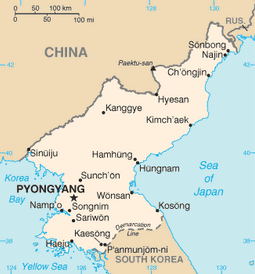 VOK English (time in UTC)
VOK English (time in UTC)
- 04:00 on 7220, 9445, 9730 kHz to Northeast Asia
- 04: 00 on 11735, 13760, 15180 kHz to Central & South America
- 05:00 on 13650, 15105 kHz to Southeast Asia
- 06:00 on 7220, 9445, 9730 kHz to Northeast Asia
- 10:00 on 11710, 15180 kHz to Central & South America
- 10:00 on 11735, 13650 kHz to Southeast Asia
- 13:00 on 13760, 15245 kHz to Western Europe
- 13:00 on 9435, 11710 kHz to North America
- 15:00 on 13760, 15245 kHz to Western Europe
- 15:00 on 9435, 11710 kHz to North America
- 16:00 on 9890, 11645 kHz to Near & Middle East; North Africa
- 18:00 on 13760, 15245 kHz to Western Europe
- 19:00 on 7210, 11910 kHz to South Africa
- 19:00 on 9875, 11635 kHz to Near & Middle East; North Africa
- 21:00 on 13760, 15245 kHz to Western Europe
For a full schedule of the Voice of Korea, please visit this page on North Korea Tech.
VOA Radiogram this weekend
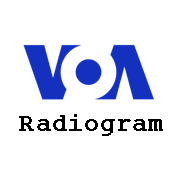 Here are the details for the VOA Radiogram this weekend:
Here are the details for the VOA Radiogram this weekend:
(Source: Kim Elliott)
VOA Radiogram on 30 and 31 March 2013 will feature the MFSK (multiple frequency shift keying) modes. This “menu” for the program shows the mode, center audio frequency, and duration of transmission in minutes:seconds…
MFSK4 1500Hz 0:40*
MFSK16 1500Hz 1:00
MFSK32 1000Hz 1:00
MFSK32 2500Hz 1:00
PSKR125 2500Hz 1:00
PSKR250 2500Hz 1:00
MFSK64 2500Hz 1:00
MFSK64 2500Hz 3:07 Flmsg format
PSKR500 2000Hz 0:58
MFSK128 2000Hz 0:57**
MFSK32 2000Hz 1:40 Image
MFSK32 1500Hz 0:58 Image* No RSID. You must tune the audio frequency very carefully. (Don’t worry if it does not work!)
**The RSID might not work, so manually select MFSK128 (needs new version of Fldigi) and the 2000 Hz center audio frequency.
Transmission schedule:
(all days and times UTC):
- Sat 1600-1630 17860 kHz
- Sun 0230-0300 5745 kHz
- Sun 1300-1330 6095 kHz
- Sun 1930-2000 15670 kHz
All via the Edward R. Murrow transmitting station in North Carolina.
Please send reports, audio samples, screenshots, etc to [email protected].
If you are unable to listen to the program because of Easter weekend, this MFSK show will be repeated later this year.
VOA reducing shortwave radio broadcasts
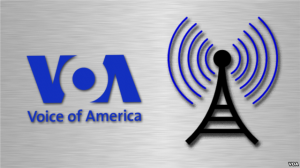 Following the BBC World Service’s lead, the VOA will reduce broadcasts to Iran, Albania, Georgia and Latin America, along with English language broadcasts to the Middle East and Afghanistan.
Following the BBC World Service’s lead, the VOA will reduce broadcasts to Iran, Albania, Georgia and Latin America, along with English language broadcasts to the Middle East and Afghanistan.
Full details below:
(Source: Inside VOA)
WASHINGTON, D.C. — Voice of America is reducing some of its radio transmissions this weekend and ending shortwave broadcasts to regions where audiences have alternative ways of receiving VOA news and information programs.
The transmission reductions allow VOA to comply with budget cuts required by sequestration and to avoid furloughs of staff members.
When the new broadcast schedule goes into effect on March 31st, cross-border shortwave and medium wave broadcasts to Albania, Georgia, Iran and Latin America will be curtailed, along with English language broadcasts to the Middle East and Afghanistan.
VOA will continue to provide audiences in these regions with up-to-date news and information through a host of other platforms, including radio and TV affiliate stations, direct-to-home satellite, web streaming, mobile sites and social media.
The new broadcast schedule calls for reductions in some shortwave and medium wave radio broadcasts in Cantonese, Dari/Pashto, English to Africa, Khmer, Kurdish, Mandarin, Portuguese, Urdu and Vietnamese. Direct radio broadcasts to all of these regions will continue.
The transmission reductions are expected to have minimal impact on audience numbers since primary modes of delivery will remain. Shortwave and medium wave broadcasts will continue to regions where they draw substantial audiences, and to countries where other signal delivery is difficult or impossible.
For more information contact Kyle King at the VOA Public Relations office in Washington at (202) 203-4959, or write [email protected]. For more information about VOA visit our Public Relations website atwww.insidevoa.com, or the main VOA news site at www.voanews.com.

